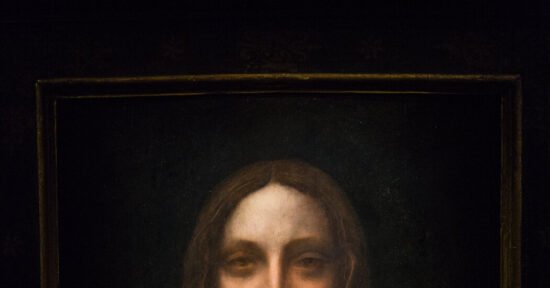The portray Sotheby’s was making an attempt to promote was a newly found work by one of many world’s biggest artists, Leonardo da Vinci. It was generally known as the “Salvator Mundi” and was an outline of Christ.
But it surely had a code identify: Jack.
Samuel Valette, a Sotheby’s specialist, testified in a Manhattan courtroom on Wednesday about how someday in March 2013 he had taken the portray crosstown in an S.U.V. from the public sale home’s headquarters on York Avenue to a premier condo overlooking Central Park.
It was one of many many journeys he had made to show work for a potential purchaser, Valette stated. He was, as typical, accompanied by safety personnel, and the portray, already valued at tens of hundreds of thousands of {dollars}, was in a protecting crate.
The condo was owned by Dmitry Rybolovlev, a Russian oligarch who has sued Sotheby’s, accusing the public sale home of aiding a Swiss supplier who he says defrauded him within the sale of a number of masterpieces.
Valette stated he had not recognized whose condo it was when he visited 15 Central Park West. Inside the house had been two males, he stated: the Swiss supplier, Yves Bouvier, a frequent consumer who had organized the viewing, and Rybolovlev, whom he had met earlier than.
However Valette insisted underneath questioning by Rybolovlev’s lawyer, Daniel J. Kornstein, that he had no thought whom the condo belonged to.
“Are you saying, Mr. Valette, that you simply organized for taking this very costly portray to an condo, and also you didn’t know whose condo it was?” Kornstein requested.
“I didn’t know whose condo it was, that’s appropriate,” Valette stated, including that insurers solely cared to know the deal with and that Sotheby’s can be current.
“On the time, I feel, Mr. Bouvier had informed me that it was an enormous condo constructing on Central Park West,” he stated.
Valette’s mind-set — what he knew or didn’t know in his dealings with Bouvier — is on the coronary heart of Rybolovlev’s case in opposition to the public sale home, which has been the topic of a federal court docket trial now in its second week in Manhattan. Valette was the Sotheby’s government who handled Bouvier within the sale of the da Vinci and three different works which can be the main focus of the case.
In every occasion, Bouvier purchased the works by way of Sotheby’s after which resold them to Rybolovlev at giant markups. Rybolovlev says Bouvier tricked him by pretending to behave as his artwork adviser within the transactions, even pretending to barter with phantom third events when he was truly the proprietor of the works. He has argued that Valette understood what was occurring and helped him.
Sotheby’s denies that. Bouvier, who shouldn’t be a defendant within the case, has denied any wrongdoing and says it was at all times clear that he was appearing as an impartial supplier.
After the viewing on Central Park West, which Rybolovlev says was set as much as give him a possibility to look at the work, Bouvier bought the da Vinci for $83 million, solely to promote it a day later to Rybolovlev for $127.5 million.
Sotheby’s officers have argued that that they had no data of any fraud, if it ever occurred, and have put ahead the argument at trial that if anybody was responsible for getting overpriced artwork, it was Rybolovlev himself for not defending himself in opposition to Bouvier’s actions.
However for Rybolovlev, Valette is central to the argument that Sotheby’s was knowingly a part of a scheme to defraud him out of a whole bunch of hundreds of thousands of {dollars}.
Although Rybolovlev has accused Bouvier in court docket papers of defrauding him within the buy of 38 works, solely 12 of the works had been purchased by Bouvier in personal gross sales organized by Sotheby’s, and solely 4 are the main focus of the trial.
Bouvier has fought Rybolovlev’s accusations in authorized disputes in Europe and Asia that ended after the events reached a confidential settlement in Geneva late final yr.
Rybolovlev’s attorneys have argued that Sotheby’s, which earned a $3 million fee on the sale of the da Vinci to Bouvier, was guided in its actions by its curiosity in pleasing a person who had develop into an essential consumer.
In questioning Valette on Wednesday, Kornstein requested a variety of questions on Valette’s enter on the transactions between Bouvier and Rybolovlev. He requested, for instance, why Valette had created Sotheby’s paperwork that Bouvier would ultimately ahead to Rybolovlev to influence him to purchase artwork; why Valette had created valuations that Rybolovlev has argued hid the markups from him; and why Valette had saved Bouvier’s identify out of transaction histories.
Valette replied that he knew Bouvier had resold artwork and that in some unspecified time in the future he had realized that Rybolovlev was considered one of Bouvier’s purchasers. However he stated he had by no means recognized which works Bouvier was promoting to Rybolovlev and that no matter he had executed constituted accepted practices and courtesies undertaken by specialists promoting works to a purchaser.
So far as he was involved, he stated, “Mr. Bouvier was the customer.”
Throughout earlier testimony on Tuesday, Valette had informed the court docket that he didn’t know Bouvier was flipping the artworks to Rybolovlev
“I perceive he was making an attempt to promote them,” Valette stated of Bouvier. “I didn’t perceive that he was shopping for them on behalf of anyone.”
Throughout Valette’s testimony on Wednesday, he was requested about an insurance coverage valuation that Sotheby’s had offered for the da Vinci in 2015, after Rybolovlev had begun to suspect that he had paid giant markups on the works he had bought by way of Bouvier.
Within the doc, which was forwarded to Rybolovlev, the insurance coverage valuation of the portray was elevated regardless of the preliminary reservations of a Sotheby’s colleague, in keeping with court docket papers, and the accompanying cowl letter was edited to delete a reference to Bouvier’s earlier acquisition of the paintings.
Rybolovlev has argued that these adjustments had been meant to assist Bouvier conceal his alleged scheme.
Valette acknowledged on the stand that he had made the adjustments at Bouvier’s request. However he stated they had been the sorts of adjustments Sotheby’s would make for any high-end consumer and that ultimately he had solely gone with a valuation that had been permitted by different Sotheby’s consultants.
“I didn’t give it some thought, to be honest,” Valette stated. “He requested for these two minor adjustments.”
He was additionally requested why, within the case of a Modigliani sculpture that Rybolovlev purchased from Bouvier, he had revised an estimated worth upward. Initially, he informed Bouvier in a 2012 e-mail that the paintings was price a minimum of 70 million to 90 million euros, or maybe much more, solely to revise that estimate to €80 million to €100 million lower than 12 hours later. Bouvier forwarded the upper projection to Rybolovlev’s aide. Valette stated the adjustment had been made as a result of Bouvier had needed him to be extra particular.
“He needed me to specific my ideas,” he stated.
Colin Moynihan contributed reporting.










